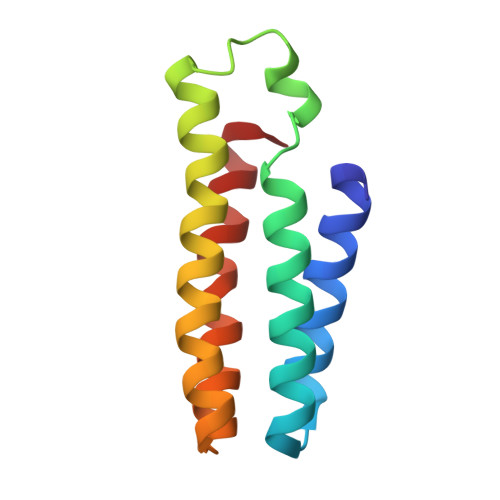In Vitro and Cellular Self-Assembly of a Zn-Binding Protein Cryptand via Templated Disulfide Bonds.
Medina-Morales, A., Perez, A., Brodin, J.D., Tezcan, F.A.(2013) J Am Chem Soc 135: 12013-12022
- PubMed: 23905754
- DOI: https://doi.org/10.1021/ja405318d
- Primary Citation of Related Structures:
4JE9, 4JEA, 4JEB - PubMed Abstract:
Simultaneously strong and reversible through redox chemistry, disulfide bonds play a unique and often irreplaceable role in the formation of biological and synthetic assemblies. In an approach inspired by supramolecular chemistry, we report here that engineered noncovalent interactions on the surface of a monomeric protein can template its assembly into a unique cryptand-like protein complex ((C81/C96)RIDC14) by guiding the selective formation of multiple disulfide bonds across different interfaces. Owing to its highly interconnected framework, (C81/C96)RIDC14 is well preorganized for metal coordination in its interior, can support a large internal cavity surrounding the metal sites, and can withstand significant alterations in inner-sphere metal coordination. (C81/C96)RIDC14 self-assembles with high fidelity and yield in the periplasmic space of E. coli cells, where it can successfully compete for Zn(II) binding.
Organizational Affiliation:
Department of Chemistry and Biochemistry, University of California, San Diego, La Jolla, California 92093-0356, USA.

















